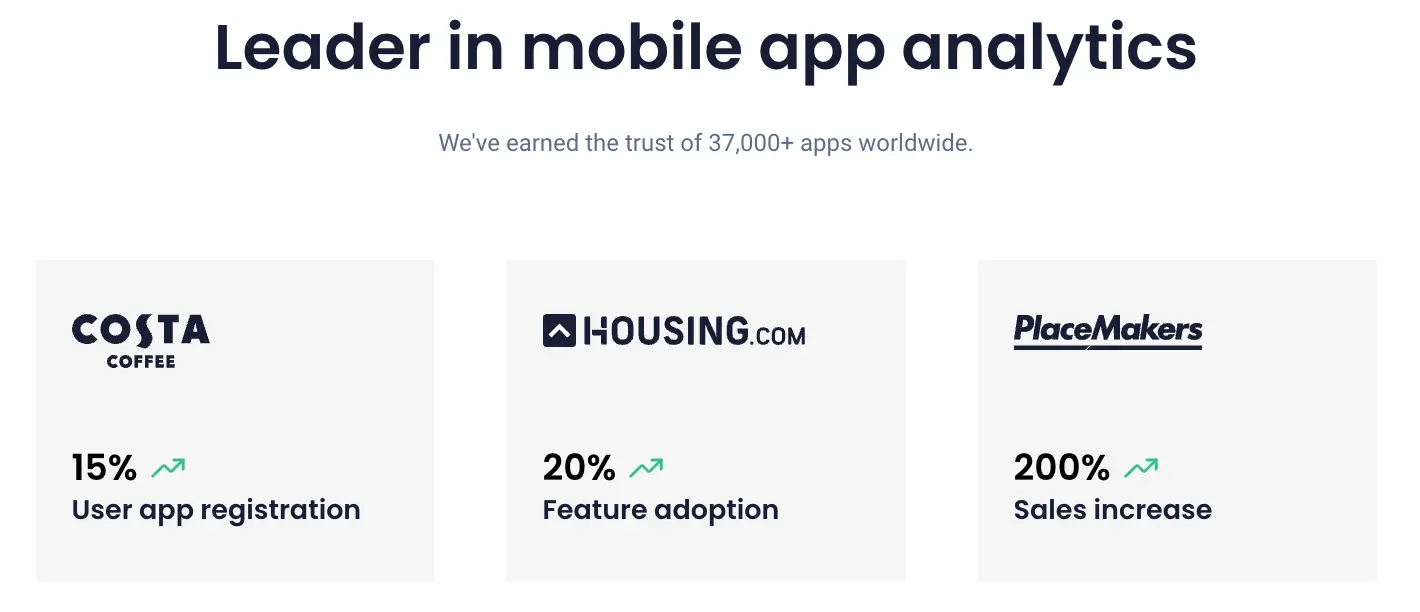Back to blog
4 MIN READ
Top 5 Best GDPR-Compliant Analytics Tools for Mobile Apps
PUBLISHED
4 February, 2024

Product Analytics Expert
As mobile app development teams strive to create engaging and innovative applications, the importance of data protection and user privacy cannot be overstated. With the General Data Protection Regulation (GDPR) setting stringent standards for handling personal data, it has become imperative for app developers to adopt practices that ensure compliance.
At UXCam, we understand the challenges that come with implementing GDPR-compliant analysis in mobile app development. In this guide, we’ll walk you through the steps to make sure that your data analytics practices are aligned with GDPR requirements.
Helpful summary
Overview: This article introduces mobile product teams to GDPR-compliant analytics and explains how to implement them in their mobile apps.
Why you can trust us: UXCam is a mobile-first analytics platform that has helped 37,000+ product teams harness the power of mobile app data.
Why this is important: GDPR-compliant analytics is a legal requirement for any mobile apps with customers based in the EU.
Action points: Choose a tool like UXCam that's compliant with GDPR regulations, review your app's data collection and processing practices, and update your privacy policy accordingly.
Further research: Check out our complete guide to building a GDPR-compliant mobile app.
Why listen to us?
At UXCam, we’ve helped 37,000+ mobile product teams implement privacy-focused analytics that support data-driven development.

With customers including Costa Coffee, Housing.com, and PlaceMakers, we have a wealth of experience in navigating the complex world of data privacy.
What is GDPR-compliant analytics?
GDPR-compliant analytics in the context of mobile app development refers to the practice of conducting data analysis within mobile applications while ensuring compliance with the principles and requirements of the General Data Protection Regulation (GDPR).
Mobile app developers need to be mindful of user privacy and data protection laws—especially if their apps collect, process, or store personal data belonging to EU citizens.
GDPR has strict guidelines for how personal data should be collected, used, and protected, including:
Lawfulness, fairness, and transparency: This means that personal data can only be collected with the user's consent, for a specific purpose, and transparently.
Purpose limitation: Personal data should only be processed for the specific purposes it was collected for.
Data minimization: Only the minimum amount of personal data necessary for the specified purposes should be collected and used.
Storage limitation: Personal data shouldn't be kept longer than necessary for its intended purpose.
Integrity and confidentiality: Appropriate security measures should be in place to protect personal data from unauthorized access or disclosure.
These principles have clear overlaps with analytics. It’s not possible to take a free-for-all approach to collecting data and still adhere to these principles. But don’t worry—with the right tools and approach, you can still gather valuable insights while following GDPR requirements.
Benefits of GDPR-compliant analytics for mobile apps
Improved trust: Following GDPR guidelines not only safeguards user privacy but also fosters trust. A study found that about 51% of users have refrained from using certain apps due to privacy concerns.
Better data accuracy: GDPR compliance mandates keeping data accurate and up-to-date. That means you have a more reliable pool of data to work with.
Fewer fines: Non-compliance with GDPR carries hefty fines. Companies that do not adhere to GDPR regulations can face penalties of up to €20 million or 4% of annual revenue in case of a data breach.
Top 5 GDPR-Compliant Analytics Tools for Mobile Apps
How to Implement GDPR-compliant analytics
1. Understand GDPR requirements
Before delving into the technical aspects, it's important for mobile app development teams to grasp the foundational principles of GDPR and the nitty-gritty practical requirements.
We recommend taking the time to read the official GDPR guidelines to gain a thorough understanding of what’s expected. It’s broken into relatively intuitive sections, and the writing isn’t super dense.

There are also third-party resources (like this checklist by GDPR.eu) that can help break down the regulations into actionable steps.
2. Identify all data collection points
It's time for a comprehensive review of what data your app collects (and how). You use this as a starting point to identify all areas affected by GDPR.
In practice, this is a three-step process—here’s an overview of what you’ll be cataloging:
Data Inventory: Create a comprehensive inventory of all the data collection points within your mobile app. This includes (but isn't limited to):
User interactions (e.g., clicks, swipes, and other gestures).
Device information (e.g., OS version, device model, and screen size).
Location data.
Personal identifiers (e.g., advertising IDs, cookies, and IP addresses).
Custom events and user inputs.
Third-Party Services: Identify any third-party services or SDKs integrated into your app that collect user data. Common examples include:
Analytics platforms (e.g., UXCam).
Advertising networks.
Crash reporting tools (e.g., Crashlytics or Firebase).
Data Flow: Map out how data flows through the app and to any third-party services. Understand what data is collected, where it's sent, and for what purposes.
3. Get user consent
Now that you know exactly what data your app is collecting, it's important to get user consent before collecting any sensitive information.
This is pretty simple. You need to create a privacy policy for your app that explains what data you collect, how it's used, and who it's shared with. This policy should be easily accessible to users within the app and on your website.
Note: Make sure you include the names of any third-party tools that will be handling user data.
4. Set up data anonymization
Next, it’s time to head over to your analytics tool to set up data anonymization.
Data anonymization is the process of removing or obfuscating any personally identifiable information (PII) from the data you collect. With a tool like UXCam, this is as simple as accessing our data privacy dashboard and changing a few settings.

There are all kinds of precautions you can take, including:
Rendering wireframes of screen recordings rather than videos
Blurring or barring PII
Preventing logging or recording on specific screens (e.g., payment screens)
You can use our Hide Sensitive Data API to blur, delete, or obscure sensitive data before it ever leaves a user’s device.
5. Analyze user data
Finally, you’re free to use your GDPR-compliant analytics tool to gather and analyze data.
If you’re looking for a dedicated mobile analytics solution with the power to yield granular insights, look no further than UXCam. We offer all kinds of features designed to help you comply with GDPR and power data-driven development, like:
Privacy-focused session replay
User journey mapping
Funnel analysis
Heatmaps
Smart events
Retention analysis
…and more.
Conclusion
Implementing GDPR-compliant analysis in mobile app development is a multifaceted process that requires a combination of technical measures, user-centric design, and prioritizing data privacy principles.
By leveraging UXCam's capabilities alongside a proactive commitment to privacy, mobile app development teams can create applications that meet regulatory standards while still gathering the data needed to power development.
Sign up for free to get started.
You might also be interested in these;
How to analyze session recordings
AUTHOR

Tope Longe
Product Analytics Expert
Ardent technophile exploring the world of mobile app product management at UXCam.
What’s UXCam?
Related articles
Mobile app analytics
5 Best Session Replay Tools to Identify Mobile App UX Issues
We’ve highlighted the top picks on the market for session replay tools and dug into what they’re known for, who they’re best for, and what users say about...

Audrey Meissner
Mobile app analytics
How to improve mobile app performance
Discover the secrets to improving your mobile app's performance. From monitoring crashes and UI freezes to minimizing app launch delay; improve your user's experience...

Tope Longe
Product Analytics Expert
Mobile app analytics
Amplitude Mobile Analytics - Get the WHY with UXCam
Explore the key features and limitations of Amplitude mobile analytics and discover how integrating it with UXCam can provide a more comprehensive...

Tope Longe
Product Analytics Expert
